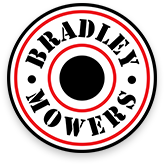10 Tips for Effective Yard Maintenance
Maintaining your yard can be a daunting task. Between keeping the grass trimmed, the flower beds weed-free, and the trees and bushes pruned, there's always something to be done. And if you're not careful, all that hard work can quickly go to waste.
1. Start With a Plan
Before you start working on your yard, it is essential to have a plan. It will help you determine what needs to be done and when and help you keep track of your progress.
2. Keep the Lawn Mowed
One of the most critical aspects of yard maintenance is keeping the lawn mowed. Mowing will not only make your yard look nicer but will also help to prevent weeds from taking over. Be sure to mow in a pattern so that you don't end up with any bald spots.
3. Edge the Lawn
In addition to keeping the lawn mowed, you should also edge it regularly. It helps to create clean and defined lines around your yard, which will make it look more cared for and well-maintained.
4. Prune the Trees and Bushes
To keep your trees and bushes looking their best, you should prune them regularly. Pruning involves removing dead or damaged branches and trimming back any growth blocking walkways or obscuring views.
5. Remove the Weeds
Weeds can quickly take over your yard if you're not careful. It is essential to remove them as soon as you see them. Weeding can be done by hand or with the help of a weedkiller, depending on your preferences.
6. Fertilize the Lawn
Another critical step in maintaining a healthy lawn is to fertilize it regularly. Adding fertilizer will help keep your grass looking thick and lush and prevent weeds from growing. There are many different types of fertilizer available, so be sure to choose one right for your lawn's needs.
7. Consider Using Mulch
Mulching is a great way to improve the appearance and health of your flower beds and minimize weed growth. There are many different types of mulch available, so you should take some time to research the various options and choose one that will work best for your needs.
8. Water the Lawn
Keeping your lawn watered is another crucial aspect of yard maintenance. In addition to helping to keep it green and lush, regular watering can also help prevent weeds from growing. Just be sure not to overwater, as this can damage your grass and lead to other problems.
9. Get Rid of Debris
Fallen leaves, branches, and other debris can quickly make your yard messy and unkempt. To keep it looking its best, regularly remove any debris. This can be done with a rake or by using a leaf blower.
10. Have Your Tools Ready
To ensure that your yard is maintained correctly, it is essential to have the right tools. The tools include lawnmowers, edgers, pruners, weedkillers, etc. Be sure to keep these tools clean and in good working condition so you are always ready to tackle any yard maintenance task.
Conclusion
Proper yard maintenance is essential to keep your landscape looking its best. By following the tips listed above, you can ensure that your yard is well-cared for without spending hours working on it.
